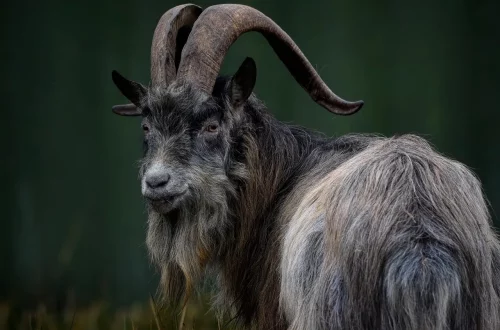
Natural Predators: What Animals Eat Ticks and Help Control Their Population
Ticks are small arachnids that have become a significant concern for both humans and pets alike. These ectoparasites thrive in various environments, particularly in grassy and wooded areas, where they latch onto their hosts to feed on blood. Their presence is not only a nuisance but also poses serious health risks, as they can transmit various diseases, including Lyme disease and Rocky Mountain spotted fever. With the rising awareness of tick-related illnesses, there is a growing interest in natural methods of controlling their populations.
While chemical pesticides can be effective, they often come with environmental and health concerns. As such, many are turning towards natural solutions, one of which is the use of predators that help keep tick populations in check. Understanding the role of these natural predators can provide insights into ecological balance and offer sustainable alternatives for managing ticks in our backyards, parks, and beyond. By fostering an environment where these beneficial animals can thrive, we can help mitigate the risks associated with ticks while promoting biodiversity.
The Role of Birds in Tick Control
Birds play a crucial role in controlling tick populations. Many species are natural predators of ticks, feeding on them as part of their diet. For example, ground-feeding birds such as wild turkeys, chickens, and some species of sparrows are particularly effective at reducing tick numbers. These birds forage through leaf litter and grass, where ticks are commonly found, effectively removing them from the environment.
Birds not only consume adult ticks but also target their larvae and nymph stages. This is significant because these early life stages are often abundant and can lead to large populations if left unchecked. For instance, research has shown that the presence of birds can drastically reduce tick populations in specific areas. In some studies, properties that encouraged bird activity, through the installation of birdhouses or planting native vegetation, reported a notable decrease in ticks.
Moreover, the relationship between birds and ticks goes beyond mere predation. Birds can also influence the behavior of ticks. Some studies suggest that the presence of avian predators can alter the habitat preferences of ticks, making them less likely to thrive in areas where birds are active. Therefore, encouraging birds in your garden or landscape can be a natural and effective strategy to combat ticks.
In addition to their role in tick control, birds contribute to the overall health of ecosystems. They help with pest control, seed dispersal, and pollination, making them invaluable allies in maintaining ecological balance. By promoting bird-friendly environments, not only do we diminish tick populations, but we also support a more diverse and resilient ecosystem.
Small Mammals: Nature’s Tick Predators
Small mammals, such as rodents and certain species of rabbits, also play a significant role in controlling tick populations. These animals are often found in habitats where ticks are prevalent, making them frequent targets for these parasites. However, the relationship between small mammals and ticks is complex. While many rodents can host ticks, some species are more effective at preying on them than others.
For instance, opossums are known for their tick-eating habits. Research indicates that these marsupials can consume thousands of ticks in a single season, significantly reducing the tick population in their vicinity. Opossums have a unique grooming behavior that helps them remove ticks from their fur, further aiding in the control of these pests.
Another small mammal that contributes to tick control is the white-footed mouse. While they can harbor ticks, they also play a role in the ecosystem by providing food for various predators. Encouraging the presence of these small mammals through habitat management can help create a balanced environment where tick populations are kept in check.
In addition to their direct impact on ticks, small mammals serve as prey for larger predators, creating a natural food chain that helps maintain ecological balance. By understanding the role of these small mammals, we can develop strategies to promote their presence in our gardens and landscapes, thereby benefiting both wildlife and human health.
Reptiles and Amphibians: Unexpected Allies in Tick Management
Reptiles and amphibians, often overlooked in tick control discussions, play a vital role in managing tick populations. Species such as lizards and frogs are known to consume ticks, albeit indirectly. These animals help maintain the balance of insect populations that ticks depend on, thereby indirectly reducing their numbers.
Lizards, for instance, are effective predators of many small invertebrates, including insects that ticks rely on for survival. By controlling these insect populations, lizards contribute to the overall health of the ecosystem, which can lead to a decrease in tick numbers. Frogs and toads, too, can help by consuming larvae and other small arthropods that may harbor ticks.
Moreover, the presence of reptiles and amphibians can enhance habitat diversity. By creating environments that support these animals, such as maintaining wetland areas or providing rocky outcrops, we can foster a natural ecosystem that is less conducive to tick population growth.
Additionally, promoting biodiversity through the introduction of these creatures can lead to healthier ecosystems. A balanced ecosystem is less likely to experience outbreaks of pests like ticks, making it essential to consider all members of the food web when discussing tick management.
Creating a Balanced Ecosystem to Deter Ticks
To effectively manage tick populations, it is crucial to create an environment that supports the natural predators discussed above. This involves implementing various landscaping strategies aimed at enhancing biodiversity. Planting native vegetation is one such strategy, as native plants provide food and habitat for a variety of wildlife, including birds, small mammals, and beneficial insects.
Reducing the use of chemical pesticides is another essential step. While these chemicals can effectively kill ticks, they may also harm the natural predators that help control their populations. By opting for organic or natural pest control methods, you can create an environment that is more hospitable to tick-eating wildlife.
Moreover, maintaining a clean and tidy outdoor space can help reduce tick habitats. Regularly mowing the lawn, clearing away leaf litter, and trimming back overgrown vegetation can limit the areas where ticks thrive. Additionally, creating designated paths and clearings can help keep humans and pets safe while allowing wildlife to roam freely.
Lastly, consider the installation of birdhouses and feeders to attract birds to your property. Providing water sources and shelter can encourage birds to take up residence, further enhancing tick control efforts.
In conclusion, fostering a balanced ecosystem that supports natural predators is crucial for effective tick management. By integrating these strategies into our landscaping practices, we can significantly reduce tick populations while promoting biodiversity.
**Disclaimer:** This article is for informational purposes only and does not constitute medical advice. For health concerns related to ticks or tick-borne diseases, please consult a qualified healthcare professional.




